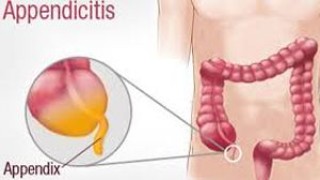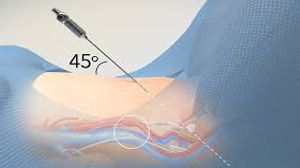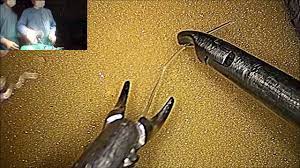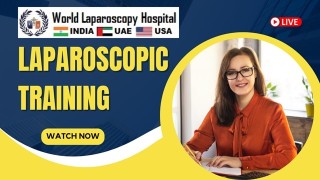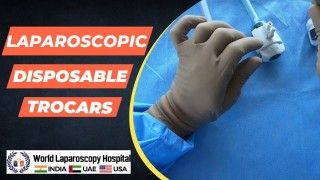Laparoscopic Oophorectomy for Ovarian Torsion offers effective treatment
Add to
Share
1,418 views
Report
2 years ago
Description
When it comes to the treatment of ovarian torsion, a condition characterized by the twisting of the ovary, Laparoscopic Oophorectomy emerges as a highly effective surgical solution. This technique offers not only relief from the excruciating pain associated with ovarian torsion but also the added benefits of minimally invasive precision. Ovarian torsion occurs when the ovary rotates, compromising its blood supply and leading to severe abdominal pain, nausea, and potentially dangerous complications. To address this urgent condition, Laparoscopic Oophorectomy has become a go-to procedure for gynecological surgeons. Laparoscopic Oophorectomy involves the use of small incisions and specialized surgical instruments to access and remove the affected ovary. This minimally invasive approach offers several advantages over traditional open surgery, including reduced postoperative pain, faster recovery, shorter hospital stays, and less visible scarring. One of the key benefits of Laparoscopic Oophorectomy is its precision. Surgeons utilize a laparoscope, a thin, lighted tube with a camera, to visualize the affected area in high definition. This advanced visualization allows for a detailed examination of the twisted ovary and surrounding structures, facilitating accurate diagnosis and optimal surgical planning. The surgical instruments used during Laparoscopic Oophorectomy are specifically designed for precise manipulation and removal of the affected ovary. The surgeon's expertise, combined with the enhanced visualization and specialized instruments, enables meticulous dissection and removal of the torsed ovary while minimizing trauma to surrounding tissues. Furthermore, the minimally invasive nature of Laparoscopic Oophorectomy significantly reduces the risk of complications and promotes a faster recovery. With smaller incisions, patients experience less postoperative pain and require fewer pain medications. They can resume their normal activities more quickly, leading to a faster return to their daily routines and improved quality of life. It is important to note that Laparoscopic Oophorectomy is generally performed when the ovary is severely damaged or when there is a suspicion of ovarian malignancy. In cases where ovarian torsion is detected early and the ovary can be salvaged, detorsion (untwisting) of the ovary may be attempted instead of complete removal. As with any surgical procedure, Laparoscopic Oophorectomy carries some risks, including bleeding, infection, and injury to surrounding structures. However, the benefits of timely intervention and the use of minimally invasive techniques often outweigh the potential risks. Laparoscopic Oophorectomy for Ovarian Torsion is a surgical procedure that provides significant relief and effective treatment for individuals experiencing the distressing symptoms of ovarian torsion. This advanced technique offers the combined benefits of precise surgical intervention and minimally invasive approaches, paving the way for improved patient outcomes. Ovarian torsion, characterized by the twisting of the ovary, is a critical condition requiring prompt medical attention. Laparoscopic Oophorectomy has emerged as a go-to solution for addressing this condition, offering a surgical relief that minimizes discomfort and promotes a faster recovery. Through the use of small incisions and specialized surgical instruments, Laparoscopic Oophorectomy enables surgeons to access and remove the twisted ovary with exceptional precision. Compared to traditional open surgery, this minimally invasive approach results in less postoperative pain, reduced scarring, and a quicker return to normal activities. One of the defining advantages of Laparoscopic Oophorectomy is its ability to provide surgical precision. By employing a laparoscope, a slender tube equipped with a camera and light source, surgeons gain a clear and magnified view of the affected area. This enhanced visualization facilitates accurate diagnosis, precise evaluation of the extent of torsion, and optimal planning for the surgical procedure. The specialized instruments used in Laparoscopic Oophorectomy allow for meticulous manipulation and removal of the affected ovary while minimizing damage to surrounding tissues. The surgeon's expertise, combined with the advanced visualization provided by the laparoscope, ensures a thorough and targeted approach, maximizing the chances of successful resolution of the torsion. Furthermore, the minimally invasive nature of Laparoscopic Oophorectomy contributes to a more favorable recovery experience. Patients undergoing this procedure generally experience less postoperative pain, have shorter hospital stays, and require minimal use of pain medications. The smaller incisions result in reduced scarring, enhancing both cosmetic outcomes and psychological well-being. While Laparoscopic Oophorectomy offers remarkable benefits, it is important to note that the procedure is typically reserved for cases where the ovary is severely damaged or when malignancy is suspected. In certain situations, if the ovary can be salvaged, detorsion may be attempted instead of complete removal. As with any surgical procedure, Laparoscopic Oophorectomy carries potential risks, including bleeding, infection, and injury to surrounding structures. However, these risks are generally minimized through careful preoperative assessment, meticulous surgical techniques, and the expertise of the surgical team. In summary, Laparoscopic Oophorectomy for Ovarian Torsion represents a significant advancement in the field of gynecological surgery. By offering precise surgical intervention and the advantages of a minimally invasive approach, this procedure provides effective relief for individuals experiencing ovarian torsion. As medical technology continues to evolve, further refinements in laparoscopic techniques will likely lead to even better outcomes, offering hope and improved quality of life for those affected by this condition. In conclusion, Laparoscopic Oophorectomy is a highly effective surgical treatment for ovarian torsion. Its minimally invasive approach, coupled with precise surgical techniques, offers patients rapid relief from pain and a quicker recovery. As technology continues to advance, the field of laparoscopic surgery will undoubtedly see further refinements, leading to even better outcomes for individuals experiencing ovarian torsion.
Similar Videos

